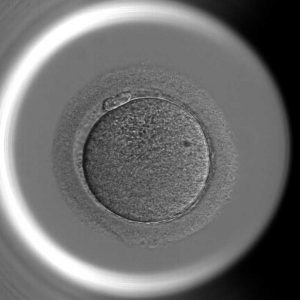New study from CCS: Women’s naturally fluctuating fertility curve is caused by chromosome abnormalities
It is well known that women’s natural fertility curve goes up and down throughout their lifetimes, but a new study, led by researchers from the Center of Excellence Center for Chromosome Stability (CCS) at the University of Copenhagen, now shows that these fluctuations are natural and caused by chromosome abnormalities that affect both young girls and middle-aged women. The results are an important step toward better fertility counseling and understanding of pregnancy loss and can be essential for the future treatment of infertility. The study was published in the scientific journal Science.

Researchers from the DNRF’s Center for Chromosome Stability (CCS) at the University of Copenhagen are in charge of an international study that has examined women’s fluctuating fertility curve. By mapping some of the mechanisms that may affect women’s fertility from their teenage years to menopause, the researchers found that the fluctuations are caused by natural chromosome abnormalities and that these vary depending on the women’s age.
“We have known for a long time that we humans have a unique fertility curve compared to many other species. The curve starts very poorly in the teenage years and starts to go downhill again when women reach their 30s. But until now, we have not known what is causing these changes,” said Professor Eva Hoffmann from the CCS, the senior author behind the study.
Together with colleagues from the CCS and many European universities, Professor Hoffmann examined 3000 egg cells from 300 girls and women ages 9 to 43. Women are born with all the egg cells they will have available throughout their lives, unlike men, who do not produce sperm cells until they reach puberty. However, women’s eggs are immature through their childhood and are only fully developed when the menstrual cycle begins.
“While the eggs lie dormant, a kind of molecular glue will make the chromosomes stick together. Later, when the eggs are maturing, the chromosomes divide. But the older the women become, the greater the risk that the glue will break down prematurely,” said Hoffmann.
Chromosome abnormalities with both young and older women
If the molecular glue dissolves, the hereditary material falls apart, resulting in chromosome errors that may, for example, lead to infertile eggs or syndromes such as Down, Turner, or Kleinfelter. But it was not only with the older women that the researchers observed chromosome abnormalities. With younger girls, the researchers found a significant incidence of chromosome abnormalities during the eggs’ maturing process. But unlike with the older women, the problem in the girls’ case was that the eggs did not mature enough. This meant that the large chromosomes in the hereditary material developed abnormalities and thus increased the risk that the eggs remained unfertilized and expelled from the body.
“Pregnancy loss is still a taboo, but with knowledge like this, we can better understand and demonstrate that it is a natural thing. At the same time, a greater understanding of the mechanisms behind our biological clock may enable us to better control the breakdown of the eggs, either in the eggs themselves or the maturation process in the fertility clinic,” said Hoffmann.
Scientists do not yet know for sure exactly why human fertility rises, peaks, and falls within a defined age range. But with the study from the CCS, Professor Hoffmann stressed how the results can be used for improved fertility counseling, an increased understanding of pregnancy loss, and the future treatment of childlessness.
